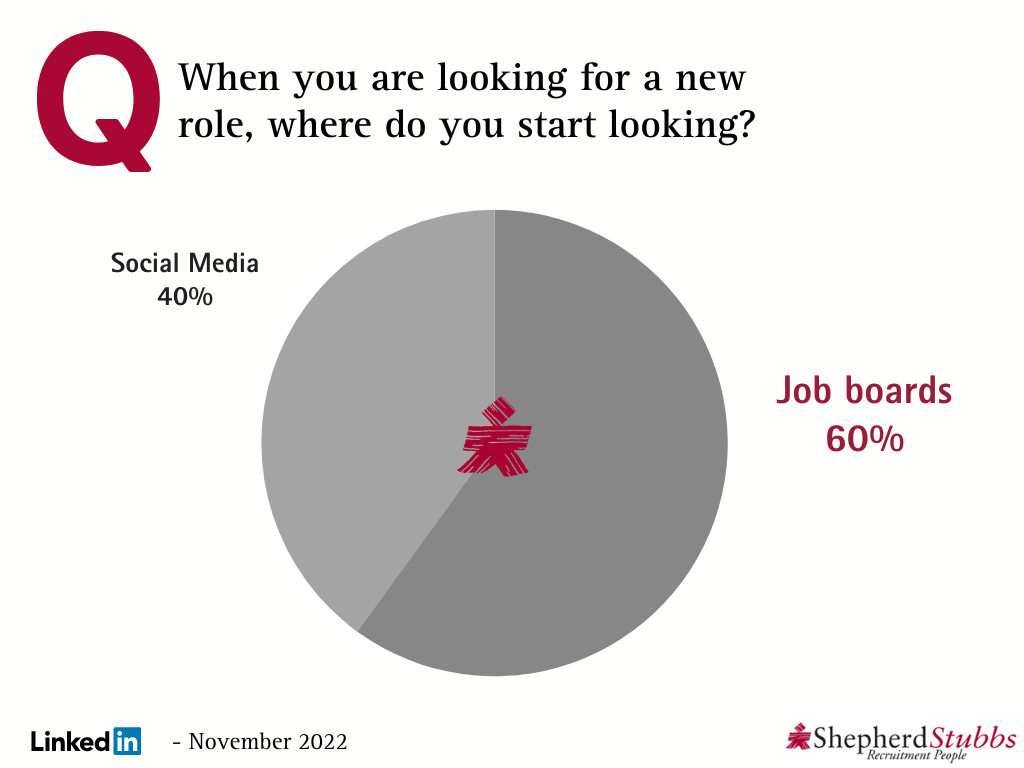Blog

LinkedIn Poll Results – November 2022
by: Jonathan Shepherd-Stubbs
December 1, 2022
The In our most recent LinkedIn Poll for last month, it was the turn of the candidates to cast their vote as we posed another key question to gain some further insight.
Our question was; When you are looking for a new role, where do you start looking?
It was no surprise to the team that the two options which received votes were ‘digitally minded’. Sixty percent of the responders said ‘Job boards’ was the first port of call and 40% voted in favour of ‘social media’.
Our industry has seen considerable change and technological advancements over the last decade, with more and more candidates using websites and social media to find their next role. However, we recognise that there is still a place for our experienced recruitment consultants to be instrumental in the recruitment process. We know that we cannot solely rely on technology and our clients depend on us to have the much needed human interaction each time.
Our December poll on LinkedIn is now live and we believe that this is an interesting one (and a trending topic in the business world) – click here to cast your vote.

